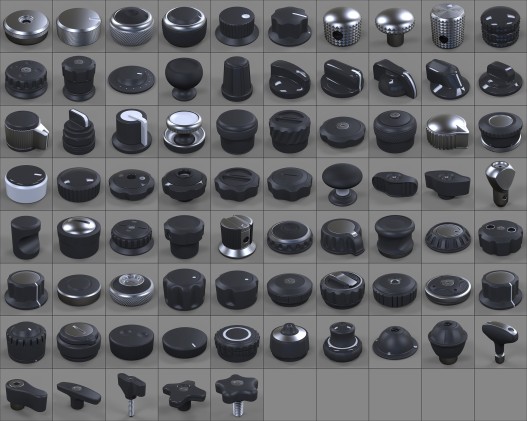Research Blog – Hard Surface Modelling for VFX
In attempting to find specific best practices for modelling there wasn’t a big difference between hard surface modelling for games and film. The biggest difference is that most of the detail is done as geometry instead of baking it down into maps, and the obvious higher amount of resolution and geometry that is allowed. So I will mostly look at video game best practices as often the way high poly models are made are similar, as well as there being a higher amount of learning resources available for real time modelling. A great example of the difference between movie model and game models can be seen in this article on the new Ratchet and Clank movie.
REFERENCE, REFERENCE, REFERENCE
One of the most underestimated stages of modelling, collecting reference is crucial to understanding the object you are working on. Even if concept material is available it is always good to have real life reference as attempting to replicate real life surfaces, shapes and proportions will yield the best results. In many cases the objects being modeled have no real life counterpart, in this case it is key on having strong concept material, as well as collecting reference of objects or surfaces that are similar to the fictional object. Another good practice is to integrate real life elements into the model, this is aided by reference, so that the model can be more grounded and can feel more believable.Reference material can help decide what details should be geometry and what should be created with the help of maps. In the case of VFX most details are geometry to create the highest fidelity results, but small details and micro detail can be done with the use of displacement maps and normal maps.

BIG SHAPES
When modelling even with great concept and references, it is ideal to create the rough major shapes of a model first to identify if it looks balanced and can work in 3d, this allows the artist to identify any problems with proportions and overlapping elements before any detail work is done. A good way of previewing what the final mesh will look like is to stack modifier on top such as chamfers or opensubdiv. Mastering caging, chamfering and subdivision modelling is key to being able to create more complex and smooth shapes. With big shapes made, it is advisable to add details gradually and making sure to balance the model with its detail, with focal areas that have more detail being contrasted with less complex areas.
NONDESTRUCTIVE MODELLING & SCRIPTS
It is advised to work in a non destructive way, allowing for any changes to be made to the model with more speed. Working in a non destructive way mean maintaining the geometry that is often lost when creating chamfers and subdividing, as these type of models are harder to work with. In 3ds max this can be done by tacking advantage of the modifier stack, unless having to export the model, the model should have the whole stack as it makes making changes way more flexible. On that note chamfering sharp edges is a big part of making hard surface models look realistic, allowing for more realistic highlights and results. Another step to making modelling faster and more efficient is the use of custom tools and scripts, these can allow tasks that would take hours to be done, to be completed in a few minutes.
KITBASH LIBRARY
One of the best ways of saving time when creating hard surface model, and any other kinds of models, is to save any small pieces or any geometry that could be reused into a separate file. This way when creating new models, certain details such as screws can be reused, most 3d tutorials advocate for this and it is a fantastic way of saving you from creating redundant geometry. A prime example although old is the work in the original gears of war, where a large part of the locust models where created from reusing parts from previous locust models. Saving any kind of work that could come in handy later is always advisable, such as saving base meshes or building a library of tillable textures and masks.

REFERENCE
(2016). 3D World, (205), 38-39, 48-52.
Asset Workflow for Game Art: 3D Modeling – Treehouse Blog. (2015). Treehouse Blog. Retrieved 24 April 2016, from http://blog.teamtreehouse.com/asset-workflow-game-art-3d-modeling
Modeling Tips. Graphics.pixar.com. Retrieved 24 April 2016, from http://graphics.pixar.com/opensubdiv/docs/mod_notes.html
The Core Skills of VFX (1st ed., pp. 49-51). London. Retrieved from http://creativeskillset.org/assets/0000/0236/The_Core_Skills_of_VFX.pdf
